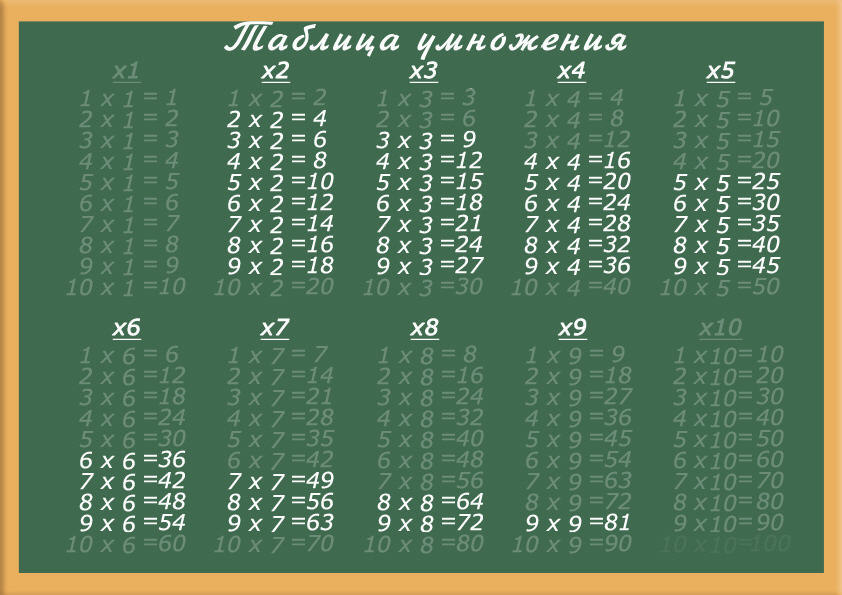Basic Methods of Learning Multiplication Table
In this article, we will explore the fundamental methods of learning the multiplication table, ranging from simple memorization to interactive approaches.
Classical (Memorization)

This method, although not very effective, is quite common. It involves simply memorizing the correct answers. Learning starts with basic examples and columns, gradually progressing to more complex ones. You should constantly review the examples with your child. Unfortunately, this method often leads to superficial knowledge that is quickly forgotten, even though it enhances memory in general.
Pythagoras Table
Instead of a list of examples, a more visual Pythagoras table is presented to the child. It resembles a square with numbers from 1 to 10 along its sides. The result of multiplying two numbers can be found at the intersection of the corresponding rows and columns. The Pythagoras table is excellent for theoretical understanding at the initial stage, but it should be supplemented with practical exercises. specialized simulators.
Counting on Fingers

This is a relatively simple multiplication method based on counting fingers. Despite its simplicity, this method has a significant drawback - counting fingers is visible to others, which may lead to lower grades and teasing from classmates.
Logical Approach

It is best to try to explain the multiplication table to your child. Most examples from the table can be replaced with simpler calculations or analogies. This way, the amount of information to be memorized can be minimized, and the child can learn to think, which will be useful in the future. However, not all children, due to varying mathematical aptitude, may fully grasp this method in the third grade.
Through Play

Another common method of learning is through play. Children tend to absorb material better when it is presented in a playful manner, and the multiplication table is no exception. In this case, the game involves solving multiplication problems with a fun goal, such as building a house. However, this method also has a potential downside. If the game is not designed well and does not reveal the essence of multiplication, children may memorize the results without understanding how they are obtained.
Online Simulators
Learning the multiplication table through online simulators is a modern and interactive approach.

